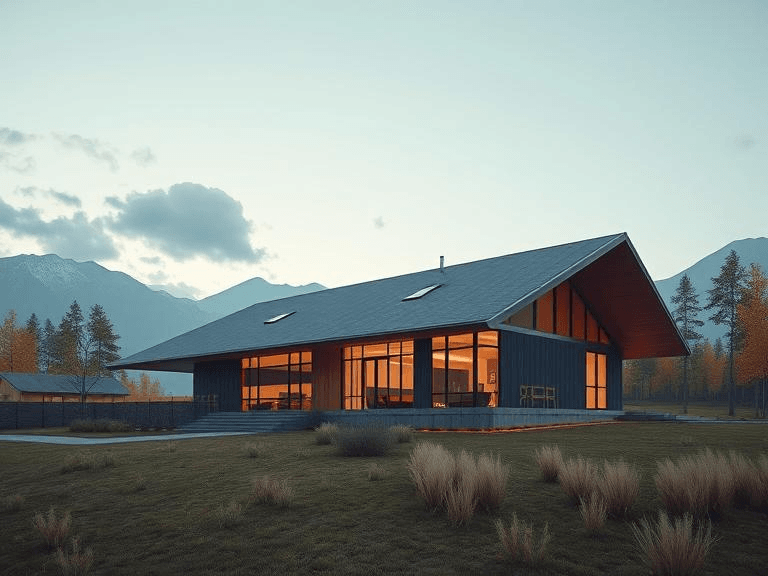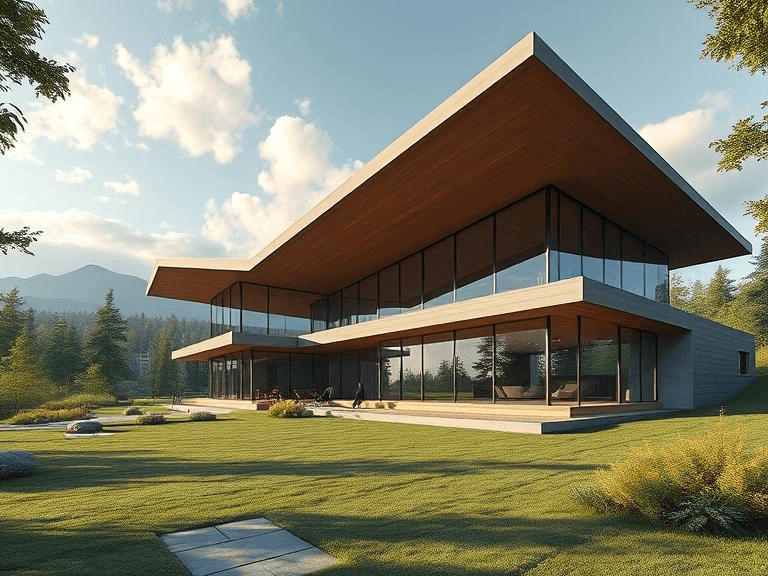
Roof leaks are a common issue faced by homeowners and can arise from various causes, each with significant implications for the structural integrity of a house. One prevalent cause of roof leaks is damaged shingles. Shingles can become cracked, warped, or even missing due to age, heavy winds, or severe weather conditions. Such damage allows rainwater to infiltrate the roof system, leading to leaks and further degradation over time.
Another factor contributing to roof leaks is poor installation. Inadequately installed roofing materials can create gaps and laps where water can enter. It is essential that roofing systems are installed by qualified professionals to ensure they can withstand harsh conditions and provide the necessary protection. Additionally, roof flashing, which directs water away from joints and seams, can fail if not installed properly, resulting in water damage.
Weather-related wear and tear also plays a critical role in roof leaks. Frequent exposure to rain, snow, and ice tends to wear down roofing materials, causing them to deteriorate over time. In particular, ice damming—a phenomenon where ice builds up along the roof edge—can create pressure against shingles, ultimately leading to leaks if not promptly addressed.
Ignoring a roof leak can have dire consequences. Over time, water entering the home can compromise the structural framework, resulting in wood rot and weakened supports. Mold growth is another serious issue associated with roof leaks, posing health risks to inhabitants and requiring costly remediation. Additionally, the longer a leak goes unaddressed, the higher the repair costs can escalate. Inadequate maintenance may not only decrease the lifespan of the roof but can also lead to extensive damage to the interior of the home, necessitating significant repairs. Addressing roof leaks as soon as they are detected is crucial to safeguarding both the home and the health of its occupants.
Identifying the Signs of a Leaky Roof
Recognizing the signs of a leaky roof is crucial for homeowners who wish to maintain the integrity of their property. Early detection can lead to more manageable repairs, reducing long-term costs and damage. One of the most common indicators of a roof leak is the presence of water stains on ceilings or walls. These stains can appear as yellowish-brown patches, often expanding in size over time if the underlying issue is not addressed. Homeowners should inspect areas such as the attic and upper floors, where leaks are likely to manifest.
Another prominent sign is dripping water, which may be experienced during rainfall or melting snow. Homeowners should look for drips in places where they have not been observed previously. This condition may not always appear immediately; it can sometimes take time for water to accumulate and trickle down. Furthermore, a musty odor inside the house can also indicate water damage and potential leakage, especially in enclosed spaces such as attics or basements.
Increased utility bills can be a less obvious but equally significant sign of a roofing issue. If a homeowner notices an unexplained rise in heating or cooling costs, it may be due to roofing problems that allow air to escape, resulting in inefficient energy usage. Regular inspections, both from the inside and outside, are essential in identifying these signs early on. Being proactive in examining the roof and its surroundings will enable homeowners to address minor problems before they escalate into major leaks. To protect your home, prioritize routine assessments and encourage repairs as soon as any signs of a leak are noticed.
Temporary Fixes for Immediate Relief
When faced with a leaking roof, homeowners may experience urgency in addressing the issue while planning for a more permanent solution. Immediate relief can often be achieved through several effective temporary fixes that help minimize water damage. One common method involves the use of a tarp. By carefully placing a tarp over the area where the leak is occurring, one can create a waterproof barrier that redirects rainwater away from the affected spot. Ensure the tarp extends beyond the leak to capture any overflow and secure it firmly using weights or ropes to prevent it from being blown off by strong winds.
Another practical solution includes the application of roofing tape. Specifically designed for outdoor use, roofing tape can be applied over small cracks or holes in the roof. Before applying the tape, it is essential to clean the area thoroughly to ensure strong adhesion. The tape acts as a sealant, blocking water entry while awaiting permanent repair. It is advisable to choose a tape that is suitable for the specific roofing material to achieve optimal results.
Utilizing sealants can also provide a temporary fix for roof leaks. These chemical products are designed to fill gaps and prevent water penetration, particularly in areas with visible cracks. Homeowners should opt for a sealant that is compatible with their roofing type to ensure longevity and effectiveness. Just like with roofing tape, proper cleaning of the targeted area is crucial for the sealant to perform effectively. While these temporary fixes are essential for immediate relief, homeowners should consider scheduling repairs with a qualified roofing contractor as soon as possible to address the underlying issues and restore the roof to its ideal condition.

DIY Repair Options for Small Leaks
When faced with minor leaks in a roof, homeowners often seek effective and economical DIY repair options. These small leaks, if left unattended, can lead to significant water damage and costly repairs. Luckily, addressing minor issues is often achievable with some basic tools and materials.
The first step in repairing a small leak is to identify its source. Inspect your roof thoroughly for any visible signs of damage, such as missing or cracked shingles, holes, or gaps around chimneys and vents. Once you’ve located the leak, ensure you have the necessary supplies, including roofing cement, a putty knife, replacement shingles, a ladder, and safety equipment like a harness, and non-slip footwear.
For patching up small holes, apply roofing cement generously to the affected area using the putty knife. Ensure that the cement is spread beyond the borders of the hole to create a reliable seal. If a shingle is damaged, consider replacing it. Begin by carefully lifting the surrounding shingles, removing the damaged one, and sliding the new shingle into place. Secure it with roofing nails and apply roofing cement around the edges to prevent any future leaks.
Additionally, addresses areas around chimneys and vents where leaks are common. Use a high-quality sealant to fill any gaps, as these areas are particularly susceptible to moisture penetration. When working on the roof, prioritize your safety by using a sturdy ladder and ensuring someone is present to assist you. Always wear a safety harness and maintain a firm grip while moving to avoid slips or falls.
Taking these DIY measures can provide a temporary solution to minor leaks, reducing the risk of further damage to your home while you plan for a more comprehensive repair if needed. Regular roof maintenance is crucial for prolonging its lifespan and preventing larger issues down the line.
When to Call a Professional Roofer
Determining the right moment to engage a professional roofer is crucial for maintaining the integrity of your home’s roofing system. Homeowners often underestimate the severity of roofing issues, leading to minor leaks transforming into significant damage. If you notice extensive damage, such as large areas of missing shingles, sagging, or significant water stains on your ceiling, it is advisable to seek professional assistance. Such issues can compromise the entire roofing structure and increase the risk of water infiltration, mold growth, and costly repairs.
Another scenario in which it is essential to hire a professional is when leaks occur in hard-to-reach areas, such as steep roofs or those with multiple levels. Attempting to access and repair these sections without the proper tools and experience can be dangerous. Professional roofers are trained and equipped to handle challenging roofing situations safely, minimizing both personal risk and the potential for further damage.
Moreover, if you lack experience with roof repairs or are unsure about the extent of the damage, calling in a professional can save time and money in the long run. A qualified roofer can perform a comprehensive assessment, identifying underlying issues that may not be immediately apparent. They bring valuable expertise, ensuring that repairs are completed correctly and efficiently. Furthermore, professional services often come with warranties, providing additional peace of mind and financial protection for homeowners.
In conclusion, knowing when to enlist the help of a professional roofer is vital for effective roof maintenance. Whether dealing with extensive damage, challenging access, or a lack of experience, hiring a qualified expert can ensure that your home remains safe and protected from the elements.
Choosing the Right Roofing Material for Durability
When addressing the challenge of a leaking roof, selecting the appropriate roofing material is crucial for ensuring long-lasting protection against water intrusion. Various materials exhibit distinct characteristics in terms of durability, maintenance, and resistance to leaks. Among the most common roofing materials are asphalt shingles, metal roofs, tile, and flat roofing, each offering unique benefits and considerations.
Asphalt shingles are the most widely used roofing material, renowned for their cost-effectiveness and ease of installation. They have a lifespan of approximately 15 to 30 years, depending on the quality of the shingles and local weather conditions. However, they require regular maintenance to prevent leaks associated with wear and tear, particularly in areas with extreme temperature fluctuations.
In contrast, metal roofs are gaining popularity due to their exceptional durability and longevity, often lasting 40 to 70 years when properly installed. This material is highly resistant to leaks, provided that seams and fasteners are appropriately detailed. The low maintenance requirement further enhances their appeal, making them suitable for homeowners seeking lasting solutions against water damage.
Tile roofs, typically made from clay or concrete, are well-regarded for their aesthetic appeal and longevity, ranging from 50 to 100 years. Their heavyweight and interlocking design provide excellent protection against leaks; however, their installation can be more costly. Additionally, they may require periodic inspections for cracks or damage that could compromise their waterproofing capabilities.
Lastly, flat roofing systems, primarily used in commercial buildings, have distinct pros and cons. Although they are susceptible to pooling water and potential leaks, the use of quality materials such as modified bitumen or thermoplastic can enhance their durability. Regular maintenance and inspections are essential to avoid long-term issues with leaks in flat roofing.
Ultimately, the choice of roofing material should be guided by factors including local climate, budget, and personal preferences regarding aesthetics and maintenance requirements. By selecting wisely, homeowners can significantly reduce the risk of a leaking roof and enhance the overall integrity of their property.
Preventative Maintenance to Avoid Roof Leaks
Regular roof maintenance is essential in maintaining the integrity of a home’s structure and preventing potential leaks. A proactive approach not only extends the life of the roof but also saves homeowners from significant repair costs in the long run. One of the most effective strategies is conducting routine inspections. It is advisable to examine the roof at least twice a year, ideally in spring and fall, to identify any potential issues early on. During these inspections, homeowners should look for missing or damaged shingles, signs of wear, and the overall condition of flashing around chimneys and vents.
Another vital aspect of preventative maintenance involves cleaning gutters. Clogged gutters can lead to water overflow, which may cause water to seep under shingles and result in leaks. Ensuring that water flows freely through the gutters directs it away from the roof and foundation. Homeowners should also check downspouts to confirm that they are directing water far from the home.
Trimming nearby trees is equally important when considering roof leak prevention. Overhanging branches can scrape against the surface and cause damage, while falling leaves can accumulate in gutters, increasing the chance of clogs. By maintaining proper distance between trees and the roof, homeowners can reduce the risk of such incidents.
Moreover, addressing minor repairs promptly—such as re-sealing flashing or replacing a few damaged shingles—can prevent these issues from escalating into larger, more expensive problems. The accumulated benefits of these proactive measures extend beyond mere cost savings; they also contribute to maintaining a safe and secure living environment.
Insurance Considerations for Roof Repairs
Homeowners’ insurance can significantly influence the process of repairing a leaking roof. If a leak occurs, the initial step for homeowners should be to review their insurance policy. Most homeowners’ insurance typically covers sudden and accidental roof damage caused by perils such as storms, hail, or fallen trees. However, it is vital to understand the specifics of the policy, as coverage varies widely among insurance providers.
When dealing with roof leaks, documenting the damage is essential. Homeowners should take clear photographs of the affected areas, noting the extent of the leak and any related damage to the interior of the home. This documentation will be invaluable when filing a claim, as insurance companies often require evidence to substantiate the request for reimbursement. The more thorough and organized the documentation, the smoother the claims process may be.
Another critical aspect is the time frame for reporting a claim. Many policies stipulate a specific period within which homeowners must report damage. Failure to do so may lead to denial of coverage for the claim. Therefore, it is crucial to act promptly when discovering a leak. Additionally, some insurance companies may require an inspection to assess the damage prior to approving repairs, so being prepared for this visit can facilitate the process.
Lastly, it is important to bear in mind that not all types of roof damage are covered. For instance, damage resulting from lack of maintenance or wear and tear is typically excluded. Homeowners should thoroughly read their policy, consult with their insurance agent, and ensure they understand what is covered under their plan. This proactive approach will help in effectively managing repairs and mitigating the financial impact of a leaking roof.
Conclusion: Protecting Your Home from Water Damage
In conclusion, addressing the issue of a leaking roof is paramount for ensuring the overall integrity of your home. The importance of timely action cannot be overstated, as water damage can lead to significant structural problems and costly repairs if left unaddressed. One of the critical takeaways from this discussion is the need for regular maintenance and inspections. Homeowners are encouraged to be proactive in identifying potential risks, as early detection of leaks can make a remarkable difference in safeguarding your property.
Implementing routine roof inspections allows homeowners to assess the condition of their roofs before any serious problems arise. These evaluations should include checking for damaged shingles, signs of water staining, or worn-out flashing, all of which can indicate a compromise in roofing integrity. Furthermore, it is advisable to clear any debris from gutters and downspouts to facilitate proper water drainage, minimizing the risk of leaks that could lead to extensive damage.
Additionally, understanding the common causes of roof leaks can empower homeowners to take preventive measures. Factors such as age, weather conditions, and improper installation can all contribute to roof wear. By staying informed about these elements and addressing them promptly, you can significantly diminish the likelihood of experiencing leaks.
Ultimately, protecting your home from water damage involves both vigilance and proactive maintenance. By following the guidelines discussed, homeowners can foster a secure living environment and extend the lifespan of their roofing system. As you embark on your journey toward a leak-free home, remember the importance of scheduling regular roof inspections to ensure your home remains safe and sound from the elements.


